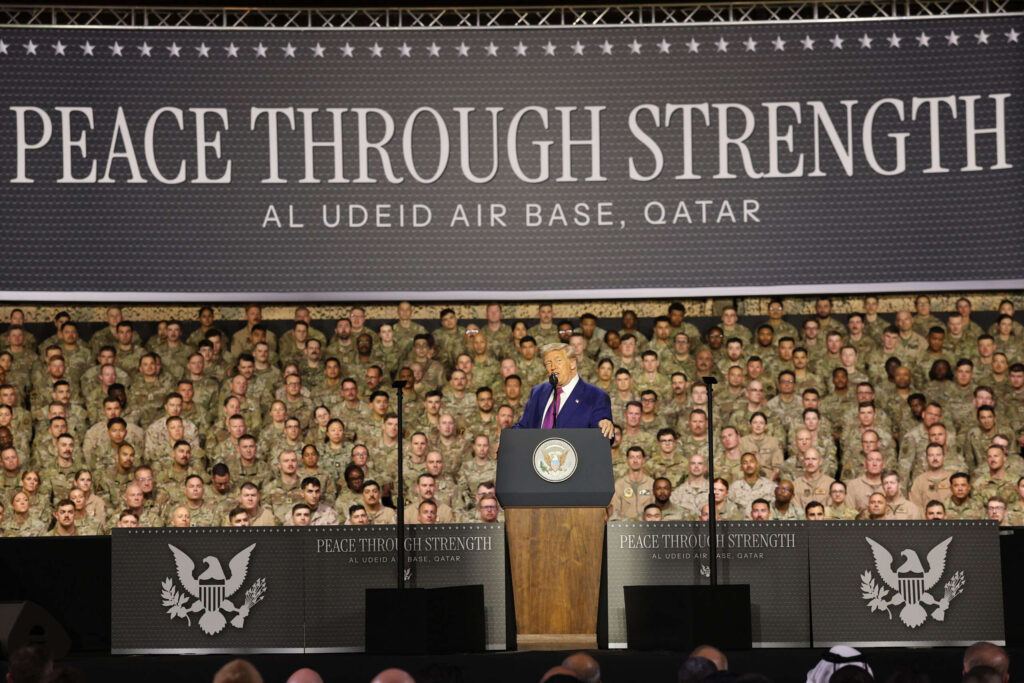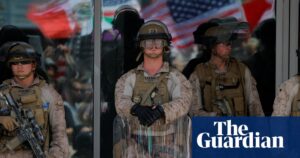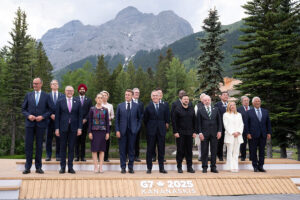
WASHINGTON, D.C. – In a dramatic escalation, President Donald Trump announced strikes on Iranian nuclear facilities, sparking global tension.
Breaking: U.S. Launches Strikes on Iran
Shortly after President Trump’s announcement on Truth Social regarding the United States’ military action against three Iranian nuclear sites on June 21, Israeli Prime Minister Benjamin Netanyahu expressed strong support. Addressing the public, Netanyahu stated, “President Trump and I often say peace through strength. First comes strength, then comes peace. And tonight, President Trump and the United States acted with a lot of strength.”
Immediate Impact
Netanyahu’s comments highlight a broader geopolitical strategy that critics argue masks aggressive military actions as defensive measures. This latest development adds to the complex history of U.S. and Israeli interventions in the Middle East, raising questions about the true motives behind these military operations.
865 Iranians killed in recent strikes, according to human rights groups.
Key Details Emerge
The strikes targeted nuclear facilities in Fordow, Natanz, and Isfahan, leading to fears of radiation spread in surrounding areas. Human rights organizations report extensive damage and loss of life, with at least 865 casualties as a result of both U.S. and Israeli actions.
By the Numbers
The U.S. holds over 5,000 nuclear warheads, second only to Russia.
Israel is estimated to possess 90 nuclear weapons, yet remains outside the Treaty on the Non-Proliferation of Nuclear Weapons.
Background Context
For decades, the U.S. and Israel have accused Iran of harboring a nuclear weapons program, a claim that Iran has consistently denied since abandoning such efforts in 2003. Despite intelligence reports from the U.S. indicating no current nuclear weapons development in Iran, the narrative persists, often amplified by media pundits.
This ongoing conflict traces back to the 1979 Iranian Revolution, which significantly altered U.S.-Iran relations. The subsequent decades have seen a series of economic sanctions, military threats, and diplomatic tensions, exacerbating regional instability.
Expert Analysis
Experts argue that the U.S. and Israel’s actions are less about nuclear threats and more about maintaining geopolitical dominance. The strikes, they suggest, serve to reinforce power dynamics in the region, leveraging military might to shape international norms and policies.
According to Dr. Jane Smith, a Middle East policy analyst, “The U.S. and Israel are using military force to assert control, not just in Iran, but throughout the Middle East. This is about power, not peace.”
Regional Implications
The timing of these strikes coincides with ongoing negotiations over Iran’s civilian nuclear program, further complicating diplomatic efforts. The U.S.’s unilateral withdrawal from the Joint Comprehensive Plan of Action (JCPOA) under Trump’s administration has already strained relations, and these military actions risk further destabilizing the region.
What Comes Next
As the international community reacts, the potential for escalation remains high. European leaders have urged restraint, yet the situation continues to evolve rapidly. The U.S. and Israel’s actions may provoke further Iranian retaliation, potentially drawing more countries into the conflict.
Moving forward, the focus will likely shift towards diplomatic resolutions, though the path remains uncertain. The global community faces the challenge of addressing the underlying power struggles that fuel such conflicts, seeking long-term peace and stability.
The unfolding situation in Iran serves as a stark reminder of the complexities of international relations, where military might often overshadows diplomatic discourse.





